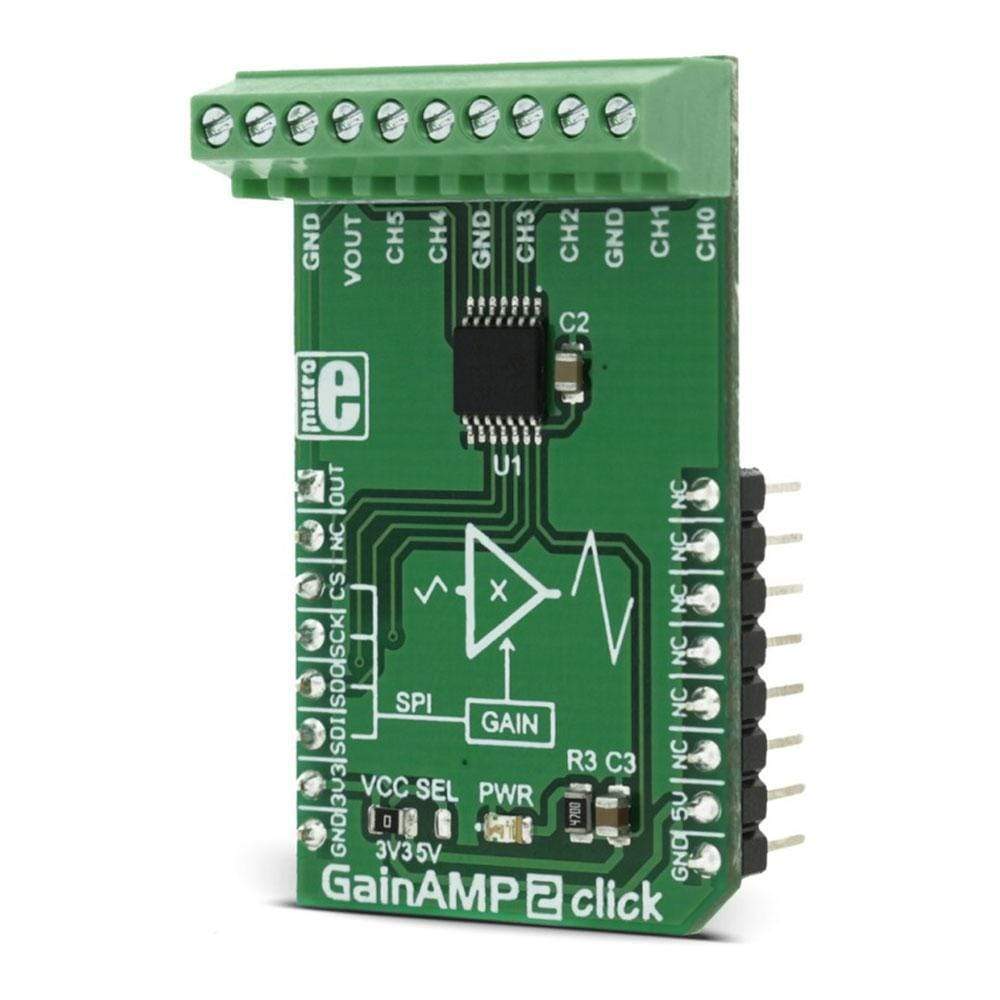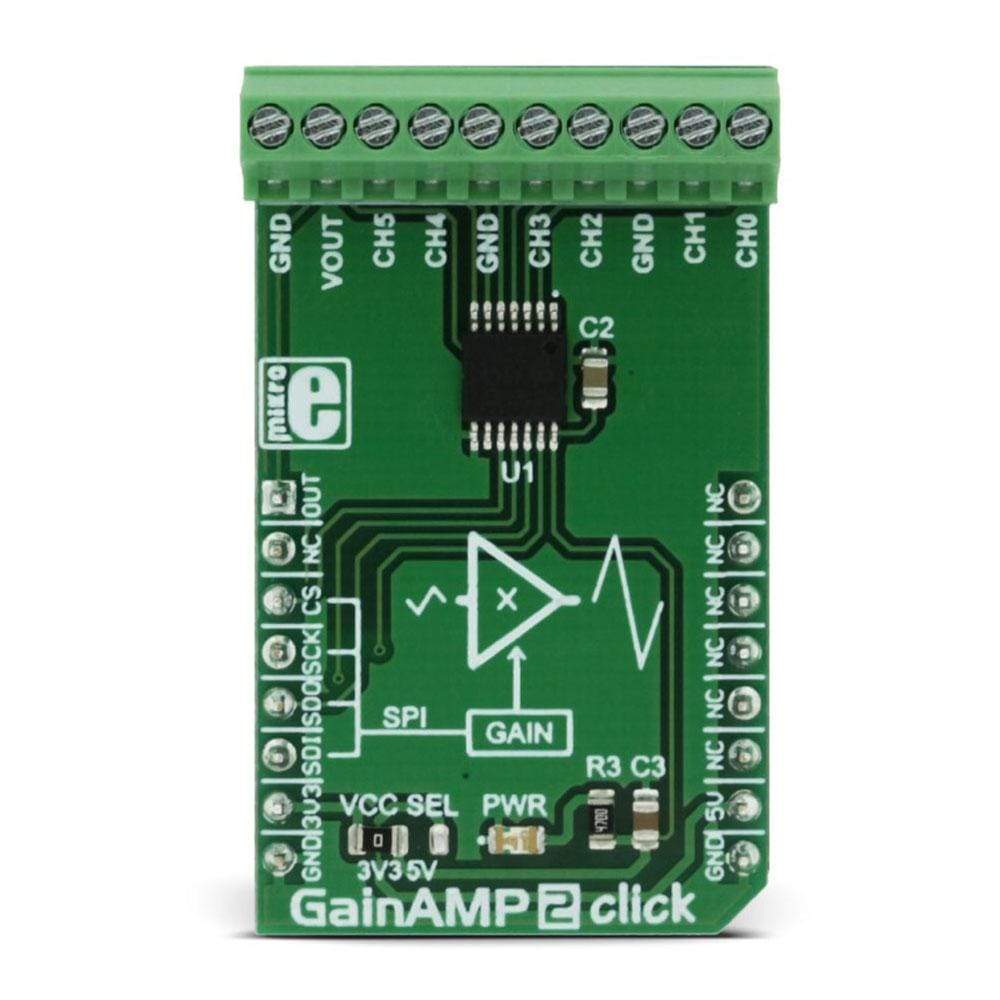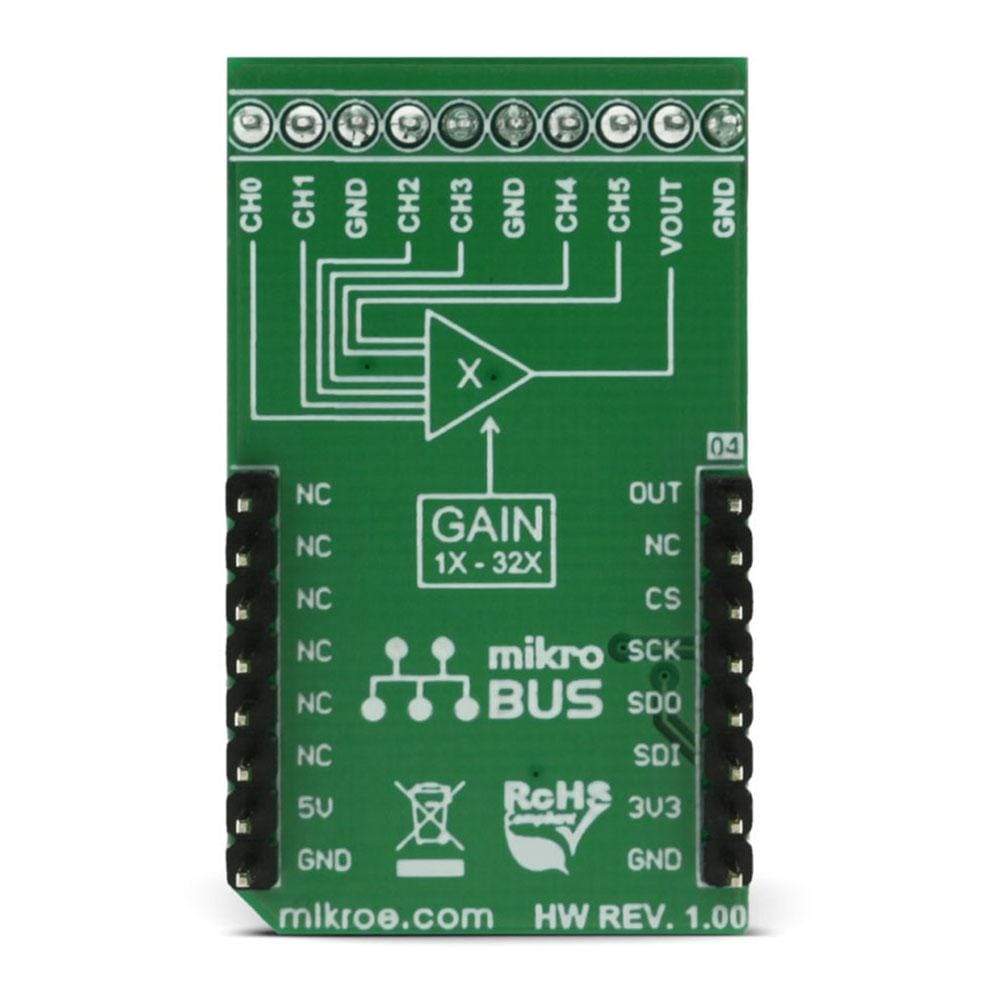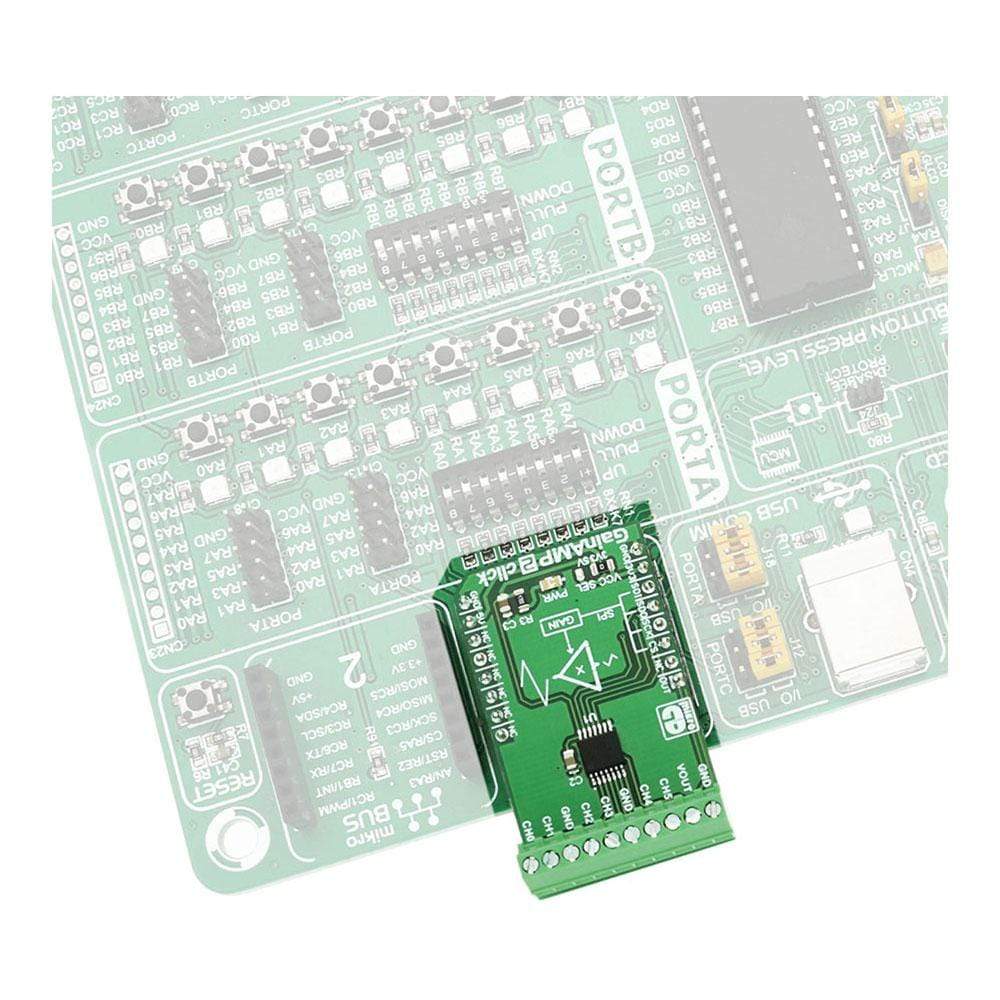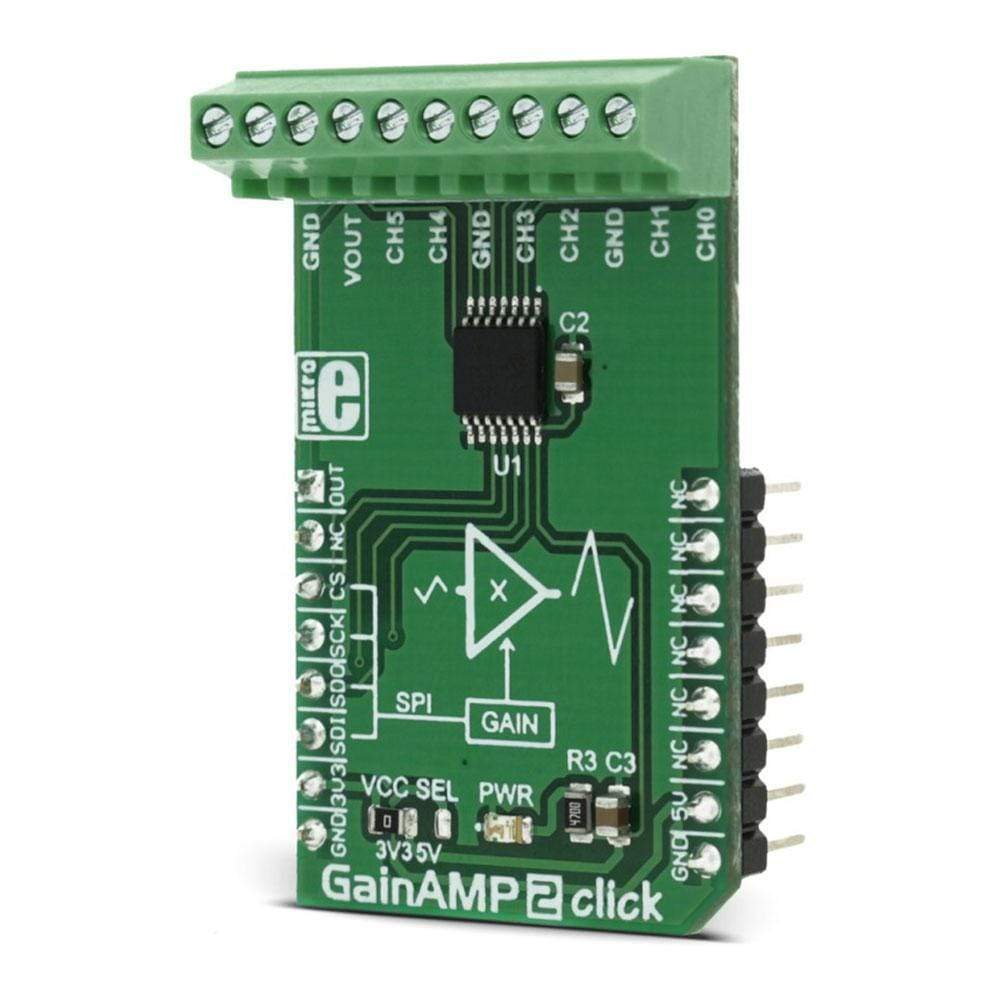
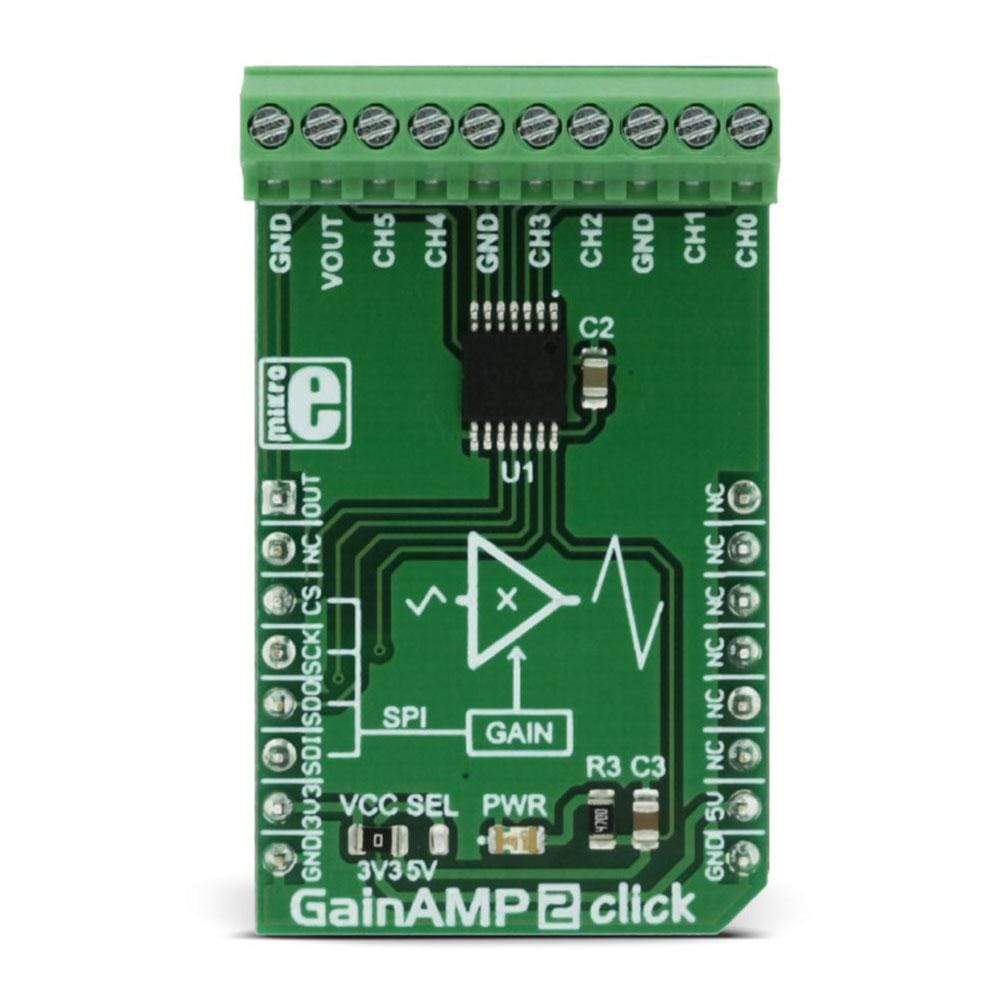
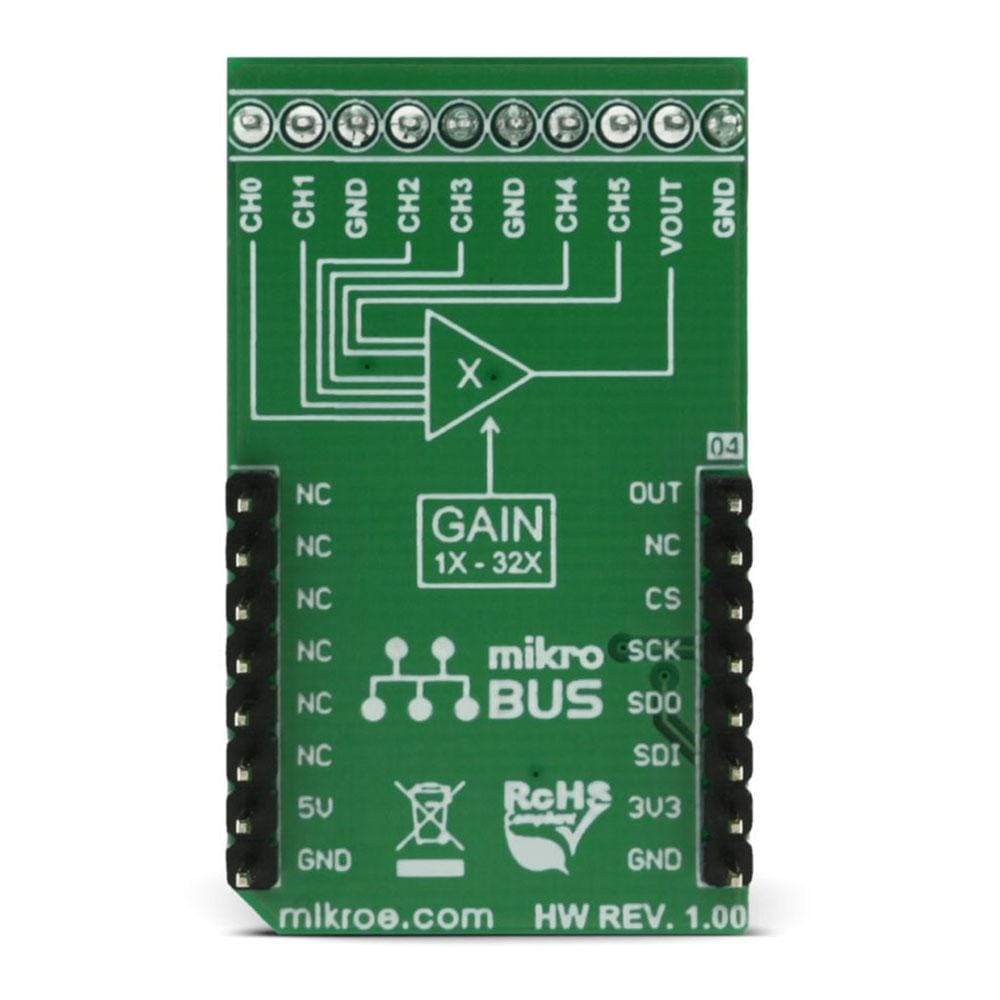
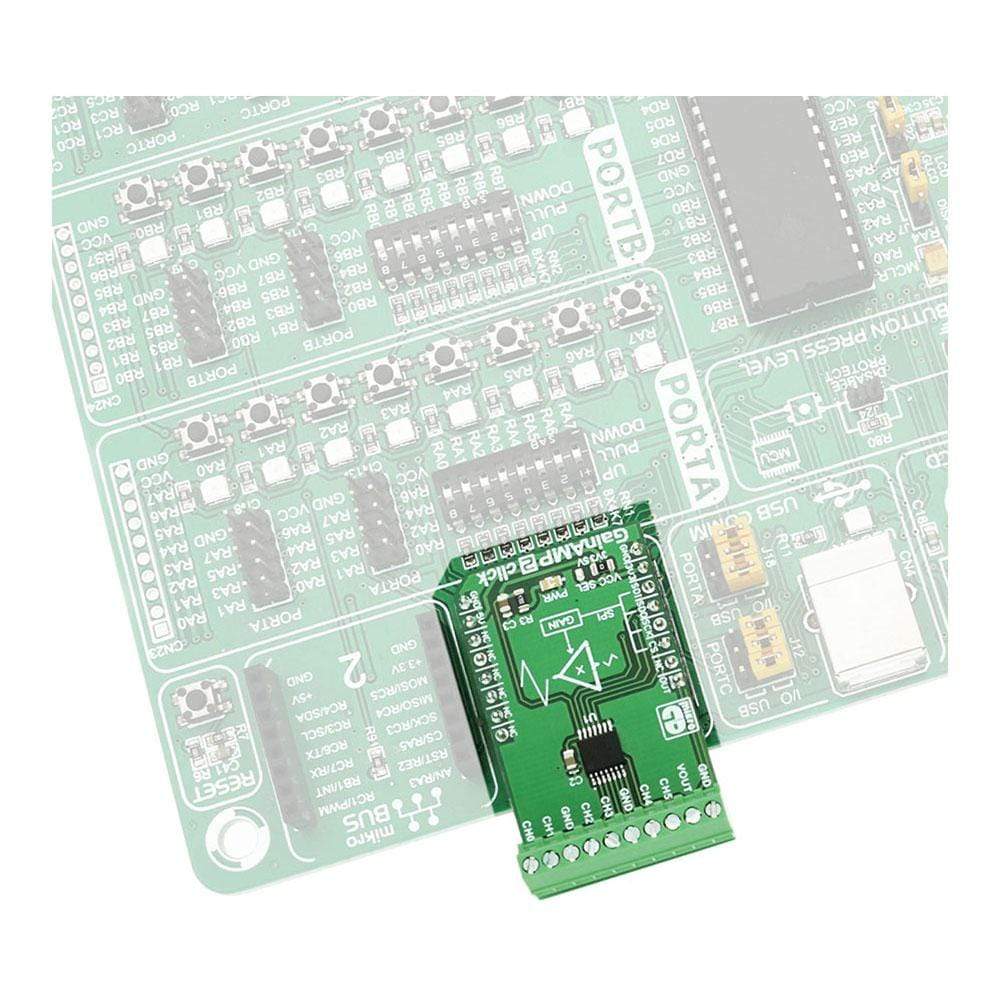
Overview
The GainAMP 2 Click Board™ is a 6-channel programmable gain amplifier used to amplify signals on any of the 6 non-inverting input channels up to 32x, in eight discrete steps. The gain can be set via the SPI communication interface.
The GainAMP 2 Click Board™ has a high signal-to-noise ratio, a good bandwidth, and a very low gain error. These features make it an ideal solution for amplifying sensitive low signals from various sources.
Downloads
Das GainAMP 2 Click Board™ ist ein programmierbarer 6-Kanal-Verstärker, mit dem Signale auf jedem der 6 nicht invertierenden Eingangskanäle in acht diskreten Schritten bis auf das 32-fache verstärkt werden können. Die Verstärkung kann über die SPI-Kommunikationsschnittstelle eingestellt werden.
Das GainAMP 2 Click Board™ verfügt über ein hohes Signal-Rausch-Verhältnis, eine gute Bandbreite und einen sehr geringen Verstärkungsfehler. Diese Eigenschaften machen es zu einer idealen Lösung für die Verstärkung empfindlicher schwacher Signale aus verschiedenen Quellen.
| General Information | |
|---|---|
Part Number (SKU) |
MIKROE-2859
|
Manufacturer |
|
| Physical and Mechanical | |
Weight |
0.023 kg
|
| Other | |
Country of Origin |
|
HS Code Customs Tariff code
|
|
EAN |
8606018712120
|
Warranty |
|
Frequently Asked Questions
Have a Question?
Be the first to ask a question about this.

